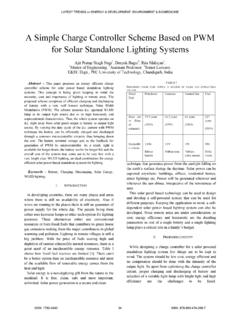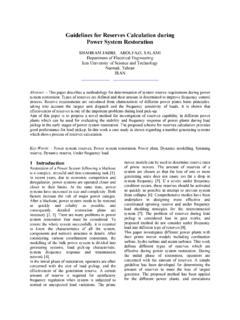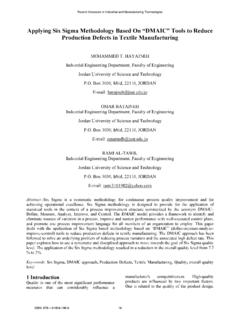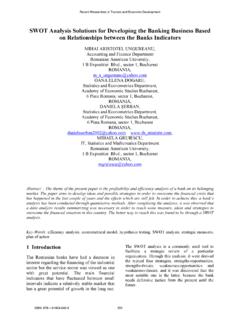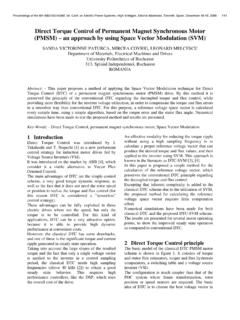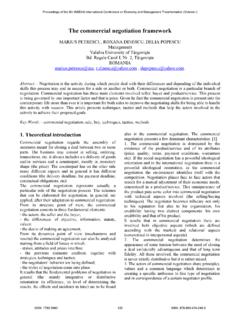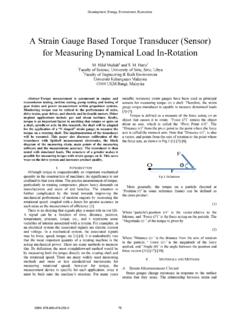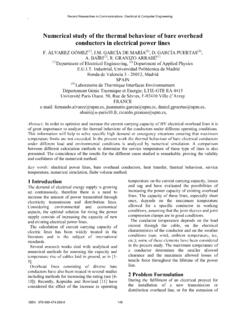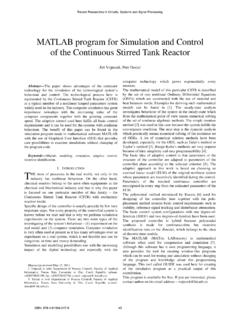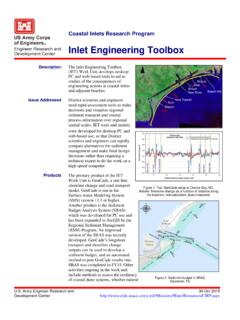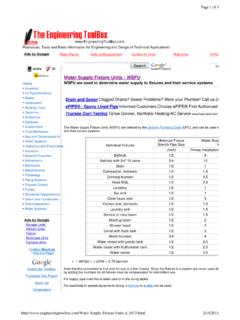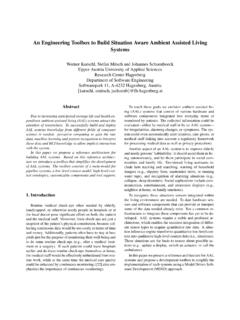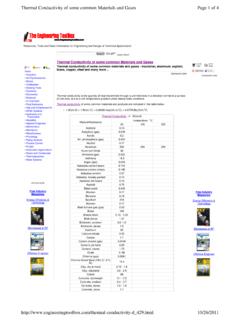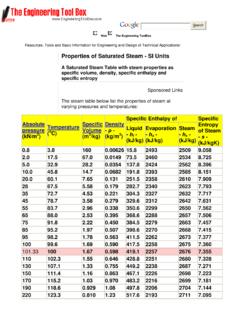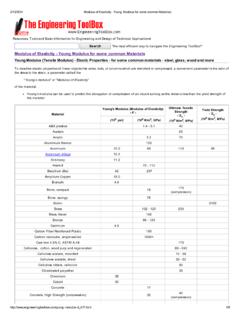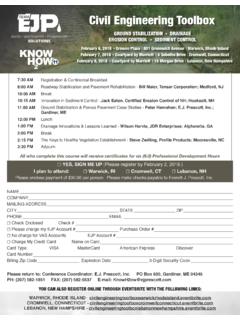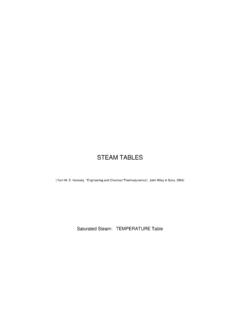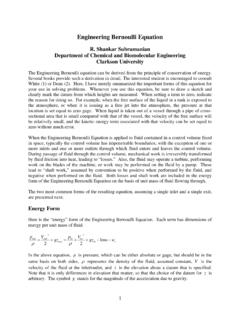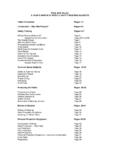Transcription of A Toolbox to Design Inverters for Automotive Applications
1 A Toolbox to Design Inverters for Automotive Applications VALERY VODOVOZOV, ZOJA RAUD AND T NU LEHTLA Department of Electrical Drives and Power Electronics Tallinn University of Technology Ehitajate tee 5, Tallinn 11412 ESTONIA Abstract: Vehicle electric systems with space vector modulation have the fast dynamic response, simple Design , and robustness to the parameters variation but suffer from the problems of low-speed flux and motor torque estimation and high current ripples that depend to a large extent on the switching frequency and supply voltage of the power inverter .
2 To increase their attractiveness for Automotive Applications , the driven motor parameters, torque and speed are to be considered in the synthesis of the inverter adjustment algorithms. In this paper, a new Toolbox for Design and exploring the inverter modulation techniques is described. Some methods of the load-dependent control of power switches are discussed and examined by simulation and experimentation. The developed control systems improve economic indicators of power converters for Automotive Applications .
3 Key-Words: power electronics, Automotive application, electric vehicle, direct torque control (DTC), space vector modulation (SVM). 1 Introduction The Automotive industry is becoming a primary market for power electronic products [1], [2]. Power converters, adjustable-speed motor drives over a wide range of power and torque, and power management systems have turned into inherent parts of modern vehicles. This has motivated many researchers to focus on Design and development the new architectures and control principles of the vehicle power systems.
4 In [3], a collection of new electromechanical energy conversion products that are considered for today s automobiles is presented. A glance at the pace of the increase in the electrification of Automotive Applications indicates that the existing 12 V architecture is no longer adequate for this area. Some of the challenges for the potential power system architecture of the future are the following. an average automobile power range tends to increase exponentially from 500 W in 1960 to 3500 W in 2015 delivery of electric power, compactness of supply systems, and electromagnetic interference of onboard power converters are the potential that grounds along with the technical and engineering challenges the number of sensitive loads such as computers, dedicated microprocessors.
5 And communication circuits is drastically increased posing an immediate call for an increased robustness and reliability in the system voltage motor drives have became the important power consumers that may cause supply instability or oscillation in the dc link voltage the increasing size and volume of the electrical machines used in the vehicle and the existence of highly sensitive loads onboard the vehicle need an intensive investigation power dispatching and monitoring during normal and emergency modes of operation are effective tools to enhance survivability of the power system of the car introduction of electric propulsion significantly change the Design scenario for the electric power system of the vehicle as the power generation and consumption result in drastic changes for the energy storage and management systems, the number of various voltage levels, fault tolerance of the traction system.
6 Etc. being an important problem for electric and hybrid electric vehicles as well as fuel-cell-driven automobiles Owing to new power electronic technologies, these demanding requirements can be met. Indeed, incorporation of advanced control into power electronic energy systems has opened new horizons in the enhancement of motor drive techniques. The main contribution of power electronic control into the energy system can be viewed as shifting the burden from hardware ( , complex geometries and Recent Researches in Applications of Electrical and Computer EngineeringISBN: 978-1-61804-074-9190winding configurations) to software (simple machine Design with comprehensive control).
7 In fact, depending on the type of the mechanical load, operating voltage system, performance requirements, and practical limitations, the type of machinery, its electronic support and control rules may significantly change. The main contenders among electromechanical energy devices targeted for Automotive Applications are the following [4] [8]: brushed-type dc machines for the small loads permanent-magnet servo motors for fans, power steering, auxiliary drives, and starter/alternators switch-reluctance motor drives that are mostly considered for electric propulsion starter / alternator, coolant pumps.
8 And other Applications in which a rugged structure capable of high-speed operation and less sensitive to temperature effects is demanded induction drives that are primarily considered for electric propulsion and starter/alternator Applications Today, Ford and General Motors are more inclined toward the induction machines, whereas Toyota and Honda choose the permanent-magnet servo motors for almost all kinds of Applications [9]. All these drive systems of battery-powered electric vehicles, hybrid electric vehicles, and integrated starter alternators require an accurate closed-loop voltage, flux and torque estimation insensitive to the parameter and supply variation.
9 The two most widely used techniques the field-oriented control (FOC) and the direct torque control (DTC) are the preferable approaches for the accurate speed drives [10]. DTC has the fast dynamic response, the simplicity of Design as a result of avoiding the stator current and flux adjustment required by FOC, in addition to robustness to the parameters variation. The DTC drive also inherits a sensorless structure applying the torque and flux control.
10 However, DTC drive systems suffer from the problems of low-speed flux and torque estimation and control and high current and torque ripples. They create vibrations, making DTC less attractive for Automotive Applications . Consideration of the motor parameters along with the power converter development or choice inevitably leads to the overcoming of these drawbacks. Therefore, the inverter output characteristics are to be related to the properties of the induction motor.
